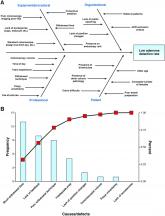Article

The plan-do-study-act cycle and data display
- Author:
- Natasha Bollegala, MD, MSc, FRCPC
- Kalpesh Patel, MD
- Jeffrey D. Mosko, MD, MSc
- Michael Bernstein, MD
- Mayur Brahmania, MD
- Louis Liu, MD, PhD
- A. Hillary Steinhart, MD, MSc
- Samuel S. Silver, MD
- Chaim M. Bell, MD, PhD
- Geoffrey C. Nguyen, MD, PhD
- Adam V. Weizman, MD, MSc
Publish date: December 5, 2016
Article

Launching a quality improvement initiative
- Author:
- Adam V. Weizman, MD, MSc
- Jeffrey Mosko, MD, MSc
- Natasha Bollegala, MD, MSc
- Michael Bernstein, MD
- Mayur Brahmania, MD
- Louis Liu, MD, PhD
- A. Hillary Steinhart, MD, MSc
- Samuel S. Silver
- Chaim M. Bell, MD, PhD
- Geoffrey C. Nguyen, MD, PhD
Publish date: October 27, 2016
This installment describes the infrastructure, personnel, and structure needed to approach an identified problem within a practice.
